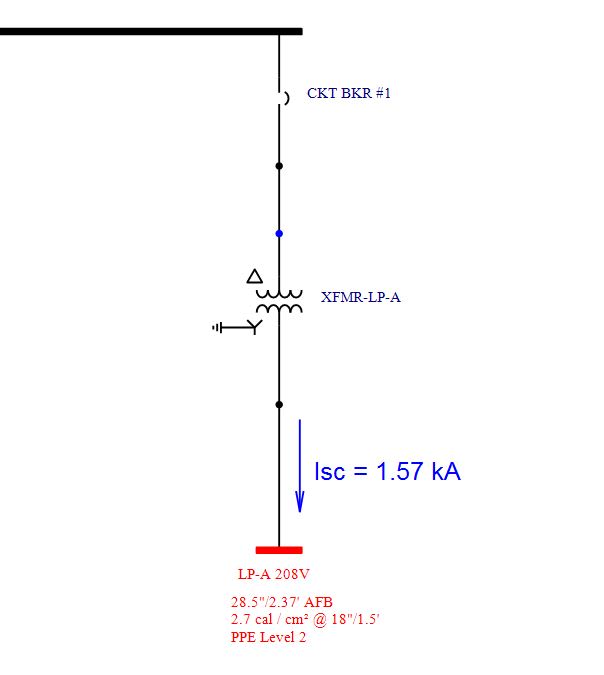bdn2004
Electrical
- Jan 27, 2007
- 799
This is a common situation at a Plant we work at. A small dry type transformer fed from a 480V panelboard, then feeds a 120/208V three phase lighting panel. The Lighting Panel requires an Arc Flash Label.
I've been told that since the Isc is less than 2000A it is only the minimum arc flash hazard - as it can not sustain an arc at that voltage and that low current. If that's the case...then why doesn't EasyPower correct this in the software? Seems it would be simple to do or give you an option - yet they don't.
How is this handled at your Plant?

I've been told that since the Isc is less than 2000A it is only the minimum arc flash hazard - as it can not sustain an arc at that voltage and that low current. If that's the case...then why doesn't EasyPower correct this in the software? Seems it would be simple to do or give you an option - yet they don't.
How is this handled at your Plant?

